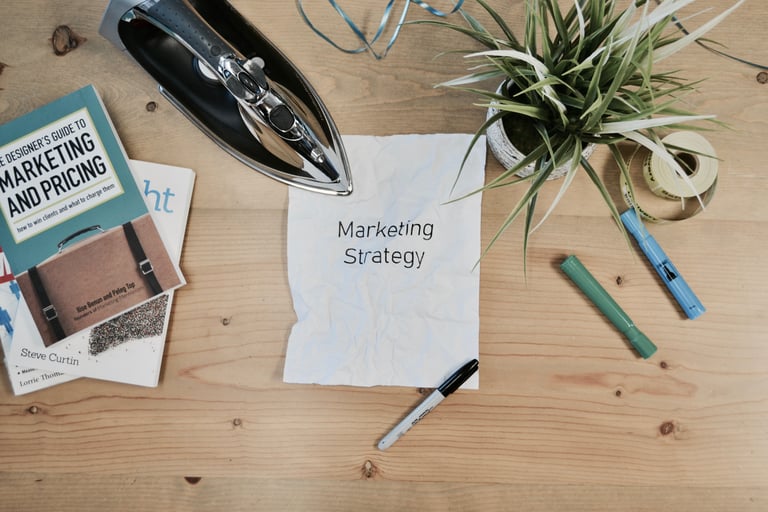What are the benefits of multi-channel marketing?
Getting your retail business to stand out in the modern world is no easy task. Competition is intense and it is everywhere. People have more choices than ever - it's no longer just about convincing people to pick your products. It can be a fight to get your business seen.
Multi-channel marketing might sound like one more intimidating and technical term to try and understand but it's a reliable way to increase the effectiveness of your marketing strategy.
In this article, we’ll explain exactly what multi-channel marketing is, as well as explore the benefits it can bring to your business.
What is multi-channel marketing?

With multi-channel marketing, you use a variety of different channels to promote your marketing campaign or strategy. You’ll deliver the same or a very similar message across all these channels at any given time.
This can involve running a campaign over a range of different digital media, traditional marketing channels, or even mixing both. These channels could include direct mail, email, TV, digital display, social media, and mobile marketing.
What are the benefits of multi-channel marketing?
The main goal of a multi-channel marketing strategy is to help you better reach your potential customers.
As with all marketing campaigns, it requires a relevant, research-led strategy to be successful. But with a multi-channel approach you can also expect some or all of the following benefits when you get it right:
Increased awareness
Obviously, the more places your campaign appears, the more likely you are to be spotted by potential new customers. Using multiple channels will reveal your campaign to a wider audience, increasing its chance of success.
Beyond this, most people have regular access to more than one channel. So as well as reaching more people, you will make repeated contact with many of them. By increasing the number of interactions you have with each customer, you will increase brand awareness as well as the opportunities you have to convert them. It generally takes around eight touchpoints to convert a prospect into a customer.
Increased engagement
As well as increasing initial awareness, seeing your campaign across many platforms can help strengthen your customer relationship. It can even build trust. As long as your content is relevant, engaging, and unobtrusive, you can create a positive brand image across many channels.
It also increases your chance of finding customers on the platform or channel they respond to best. Not everyone reacts to a channel in the same way. The more channels you are using effectively, the more likely you are to find your customers in the place they are most receptive to.
Increased impact
When you send a very similar message across different channels, it has the potential to resonate more with each individual. Your message will appear more important, more relevant, and more popular because it is seemingly everywhere. This will increase the overall impact of your campaign.
Lower costs and increased ROI
Designing a campaign that is effective across many channels can be more expensive than one designed for a single channel or platform. However, it will take less time and resources than creating unique campaigns for every channel, and combined with the increased lead generation, you will see a much higher ROI.
A competitive edge
The more visibility you have, the more likely you are to be spotted before your competitors are as well. You will also be present on any channels your competitors are missing from.
Things to consider before starting multi-channel marketing

Of course, multi-channel marketing won’t work for every product, business, or even every campaign. Before setting up a strategy to be shared across multiple channels, here are a few things to bear in mind:
Your Audience
A multi-channel approach is a great time to explore a channel you may have been neglecting, but only if it’s relevant. Check your market research (buyer personas, customer interactions) and make sure that potential customers will appreciate this channel rather than wasting time and resources for no ROI.
Your Budget
Is it realistic to use a multi-channel approach with your current budget? This doesn’t just mean your financial budget either - do you have the time or staff capacity to cover it?
Even though you’re tackling multiple channels at once, you'll still need to tailor your content specifically for each one, and you’ll need the resources that entail.
Your Content Capabilities
As well as taking more time, money and effort to create additional content, you might need extra resources. Can your team create video, audio, and display content? What about printed content?
Much like your budget considerations, if you can’t produce high-quality content that meets the expectations of the channel, you are better off not using it at all.
Your Message
It is equally important that your message is well-suited to every channel you choose. Throwing something onto a channel just because it is possible can create a sense of oversaturation that irritates your audience. As well as tailoring the form the content takes, make sure it is relevant and personalised to each channel. If it doesn’t quite fit then pick a different channel.

In the modern world, all retail businesses face intense competition to be seen. A multi-channel marketing strategy can help you stand out but getting it right takes a lot of time, effort, and expertise.
If you’d like to harness the power of multi-channel marketing without losing countless hours, you can let TwentyCi do the work for you. Our data-driven multi-channel marketing service can target the right customers at the right time, taking the hard work out of your hands and delivering reliable results.
To find out more visit www.twentyci.co.uk or email enquiries@twentyci.co.uk